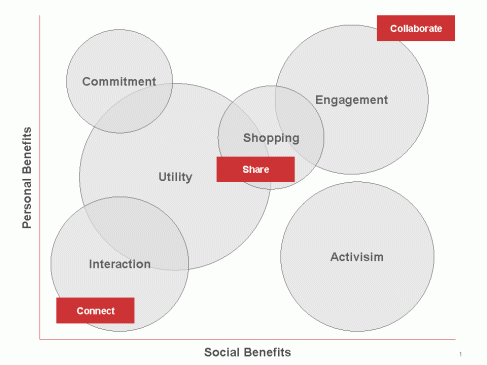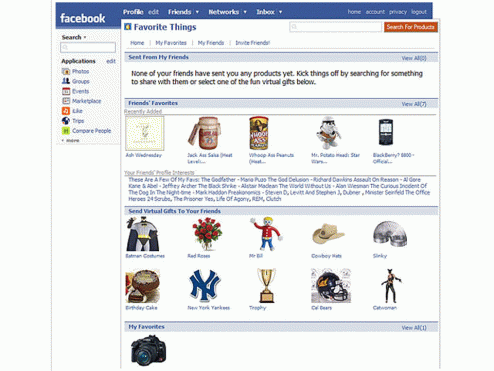An interview with Mark Whitaker, Editor-in-Chief of New Ventures, Washingtonpost.Newsweek Interactive
Consumer spending on green products is growing: the 2007 Cone Consumer Environmental Survey cites that nearly half (47%) of all Americans purchased eco-friendly products in the past year. Such green products included:
- Products with recycled content (62% of consumers who purchased green)
- Energy-efficient home improvements (56%)
- Cleaning supplies (48%)
- Organic or other third-party certified foods/beverages (24%)
- Energy-efficient cars (13%)
- Green apparel (10%)
Given the choice, American consumers say that they prefer to purchase more eco-friendly products. Yet, there are stipulations: when while most people say they will buy green, they typically do so only when product “price, accessibility and attributes” are similar to green alternatives. (“The Rising Power of Green Spending,” Kenan Institute Asia, December, 2006) It is not surprising then that online business models are emerging to capitalize on this growing interest in greener consumerism including:
Shopping sites: Amazon recently added a “Sustainable Living” section, joining existing sites including VivaTerra and Organic Fair Trade that sell greener products directly to consumers.
Shopping advice sites: Online publishers – including Washingtonpost.Newsweek Interactive which launched Sprig last week and National Geographic which recently acquired The Green Guide – are joining existing green shopping advice sites such as Great Green Goods and Ideal Bite to inform consumers on green products and lifestyles.
Sprig – short for “Stylish People are Into Green” – is a compelling online shopping advice and lifestyle site offering original content and news on stylish products that happen to be green. The site’s goal is to become the Daily Candy of green – and then some. With a robust web site that aggregates green products – 1,500 at launch and counting across the food, fashion, beauty, home and lifestyle categories – and provides exclusive editorial content, Sprig promises an engaging shopping platform for the growing audience who values green style.
Last week, I had the opportunity to speak with Mark Whitaker, Editor-in-Chief of New Ventures at WashingtonPost.Newsweek Interactive. We talked about the decision to launch Sprig, its growing target audience and the emerging interest in green consumerism.
MG: What is the impetus for Sprig and what will it offer consumers?
MW: Sprig is the convergence of two things. First, a willing appetite at the [Washington Post Company] board level to do more investing online. Last year we generated $100MM in revenue [online] with 250 employees devoted to the channel. That is where we expect the growth.
Second, we were approached by an editorial business team that had been involved with Organic Style at Rodale. [The magazine] had folded for a variety of reasons. They came to use and said: “We think that the idea of having a publication that identifies great products that are also environmentally friendly would be a great service. And this is the moment.”
And if anything, it is better done online. One, the online [channel] is more environmentally-friendly. Two, people who are forward thinking about the environment are also more likely to be online. And three, it offers instant delivery.
MG: Who is your target and what are you offering?
MW: We plan to target women as the primary consumers and decision makers about these products.
The original concept was focused on the newsletter. You know the Daily Candy?
MG: Yes.
MW: The Daily Candy has shown that model of short daily newsletters – devoted everyday to different products that makes you feel like you are getting the latest information – works. The newsletter is a very viral thing both in terms of the technology and with its target: women as an audience are evangelists and tell each other. They have shown that has worked. Let’s take that kind of model and apply it to this space.
But, then we decided to be far more ambitious and launch a website and have it more than an archive of our newsletters. [The website] will have video 2-3 new clips a week, ranging from consumerist profiles of companies to “how-tos” with interviews with green experts. Green celebrities that we interview will fill out an online questionnaire that we upload with pictures that they send to us. We will also allow them to go into our database to identify products that they like, to create sort of a celebrity wish list.
For consumers, we will also have a template that users can use to create your own page. They can fill out the questionnaire, upload pictures, fill out the questionnaire, pick products from the database and [create] a profile page that looks like our expert pages.
What I think is really the killer app in this is the interactive, searchable database of green products. We are hoping to have as many as 1,500 products at launch and then keep adding to it. For each product, we will have a blurb about why we think it is a good product and what is an environmentally friendly product, along with the name of the product, company, price information and a link to the [product] site.
MG: How do you leverage the data?
MW: That is a very interesting question. What we know we are good at is selling display advertising against quality content. But, obviously, we have the potential to experiment with other things like more targeted advertising.
The other thing that is interesting about this space is that more and more products are coming onto the market. The two principle editors say that when they go out to the shows, the increase in good products has grown exponentially even compared to a year or two ago.
MG: Do you feel that you are bringing style to the green market or green style to the mass market?
MW: I think it’s more the latter. Until recently, there were many people that thought green style was an oxymoron. We do not think that is true anymore; we think it is one of our core convictions behind the site.
Some elements within the traditional green community won’t [embrace the site] because so much of it is about shopping and consumerism. By definition, Sprig will not be for them.
But, we think the real opportunity is with people who are becoming aware of [green] but don’t quite know what to do. If they are in a position where the do not have to sacrifice anything – style, quality – they will be interested.
This is not a site that will overtly push a lifestyle on you; it is going to give you options. One of our mantras is that the world may be better off if 95 percent of the people became 5% more green than 5% of the people becoming 95% more green.
MG: You are providing consumers with a place to find green products. But you also may be spurring supply because you are providing a low cost channel for suppliers to test and distribute green products. Is that not the case?
MW: That’s right. To say upfront that we have that effect would be presumptuous. Some people would say that we are being “light green”. That may be true, but the fact of the matter is that by being light green we will encourage more mainstream producers to actually start producing new products.
One thing you will notice is that in terms of the aesthetics: [Sprig] is not about shouting green at you. If you go to most of the existing green sites and publications, the color green almost become a cliché.
We wanted something that felt distinctly like a brand. We wanted a design and color palate that evoked what we were talking about without being heavy-handed and literal. We also wanted to project out ten years and said: “What if green is universal then?’’ And calling yourself “green” does not really give you something extra. So we are hoping people will embrace [the brand] not just because it is green but because it is cool and they like our tastes and aesthetics.
MG: Why is this the right time to launch Sprig?
MW: I think that we are at the front edge of the wave. You can see the wave building, but it has not crested yet, and we are jumping on at the right moment.
MG: You say that women are your primary target. Tell me about their demographic makeup?
MW: [Our target] is based on both demographics and psychographics. It is women with a fairly wide age band. But, elements within each age group will connect with us for slightly different reasons. It is for younger women who want to be hip and stylistic. They are also a generation that cares about the environment. If there tends to be an activist movement on campus, that tends to be it. So they are attracted to it.
There are also enlightened baby boomers who are getting more into this. The Laurie David [co-founder of Stop Global Warming and a producer of An Inconvenient Truth] type. Or, in between people who have been turned on to it because they are mothers and are concerned about what is good for their kids.
MG: Are these women purchasing green products today or are you going to open up a whole new world for them?
MW: I think it will vary. Some people will be very knowledgeable, but given the depth of our [product] database, we will introduce them to a lot of products they didn’t know about.
But then I think there will be some people who have literally never really thought about this. We want [the brand] to be accessible to those who do not think of themselves as green. It is almost like it is the kind of site that they would want to shop or check out anyway. And all of this stuff is good for the environment. That’s cool.















